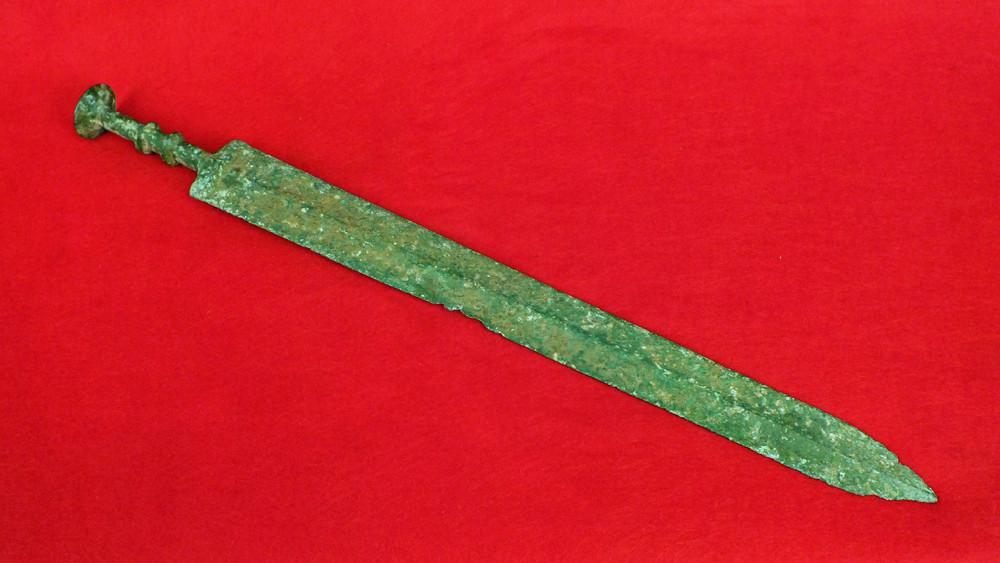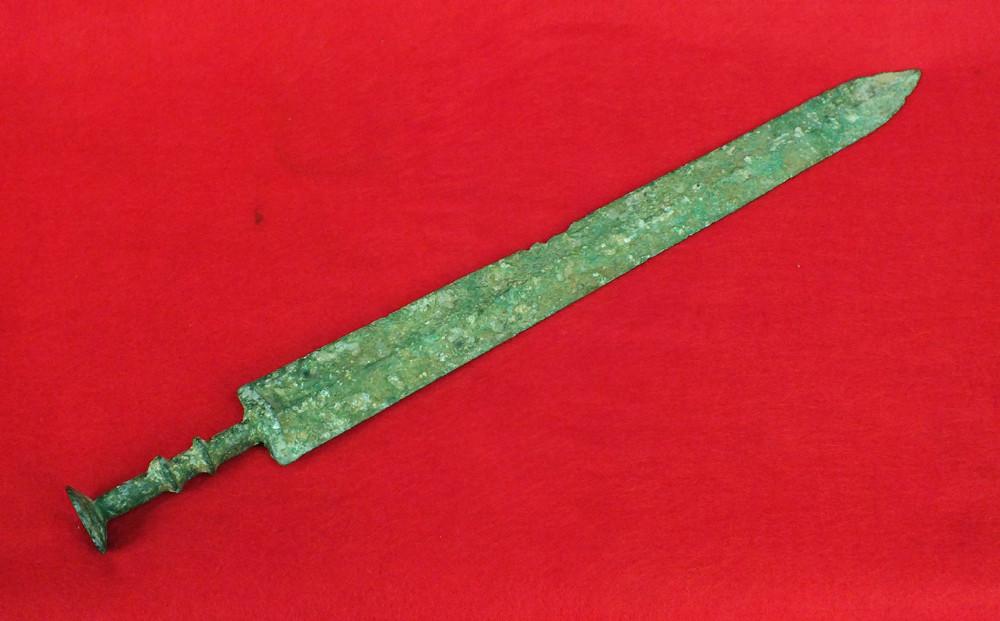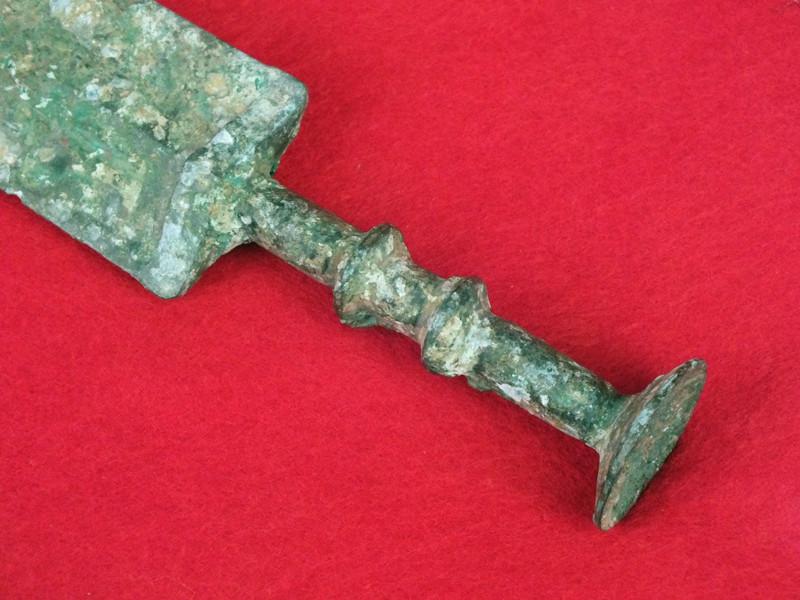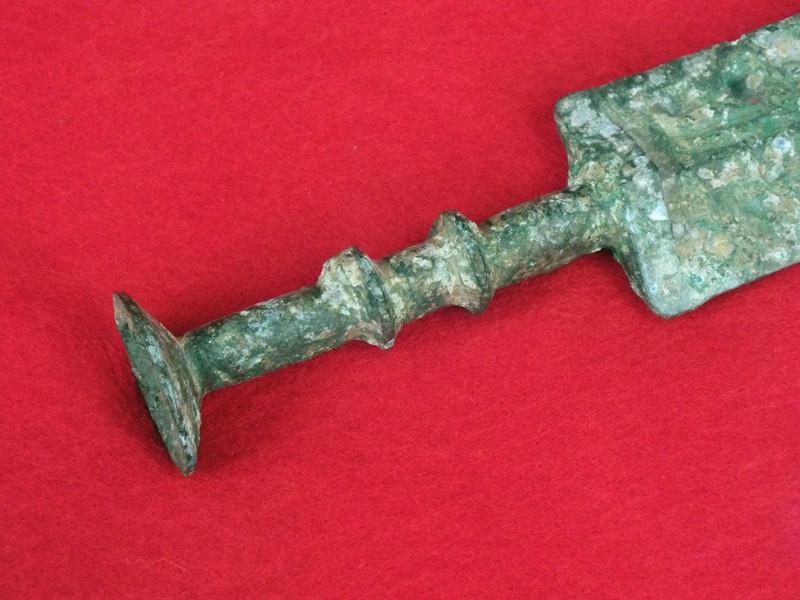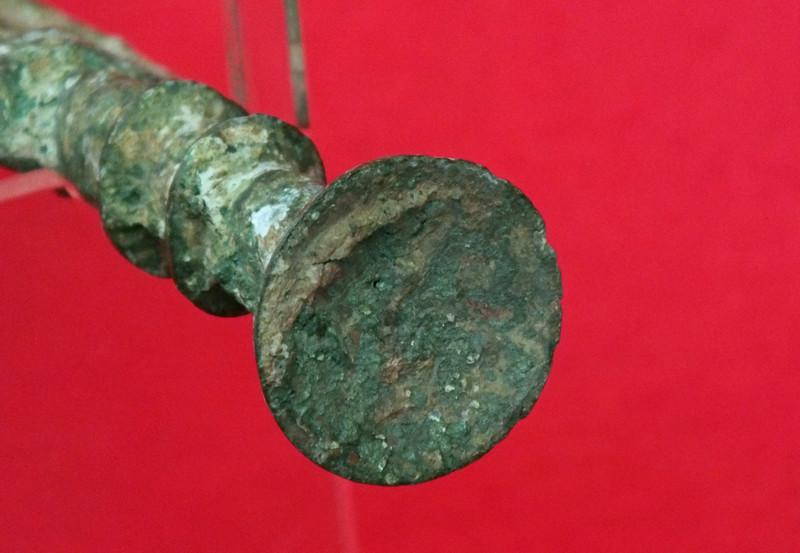Ancient Bronze Sword Original Items
$ 1.495,00 $ 373,75
Original Item: This sword was reportedly dug up in north-western Anatolia in the late 19th Century. It is all bronze, but the hilt may have been made separately and attached to the blade. The blade is a common shape and size for Persian swords of about 900 BCE, although roughly similar swords, including variations on the Greek Xiphos sword, have been found dating from around 1300 BCE forward. The blade is 39.5 centimeters long by 4.5 centimeters wide at the hilt. It has a full-length strengthening rib on both sides of the blade. The maximum blade thickness at the hilt is just over 7 millimeters. The blade has two straight edges, except for variations from aging. This can be seen in the photographs.
The hilt has two circumferential ribs and the pommel is a concave disk 3 cm in diameter. It was clearly made for a small hand. It is heavily corroded, as can be seen in the photographs. It weighs 402 grams, which is about typical of bronze swords of the period of the period.
This ancient sword was bought at auction in the U.K. a few years ago, and the only information on its origin that was available was that it was dug up somewhere in the north-western corner of Anatolia in the late 19th Century, a period during which there was a very large trade in artifacts dug up by local citizens. The demand for ancient artifacts had become something of a craze in Western Europe, brought on by the sensational finds of the German amateur archeologist Heinrich Schliemann at the site of Ilium.
Prompt Shipping and Professional Packaging
We provide a variety of shipping options due to our long-running partnerships with UPS, FedEx and DHL. Our warehouse personnel are well trained and will pack the goods according to our exact and precise specifications. Before shipping your items will be thoroughly inspected and secured. Every day, we deliver to thousands of customers in different countries. This is a sign of our determination to become the largest online retailer worldwide. Both Europe as well as the USA have warehouses and distribution centers.
Note that orders containing more than one item will be subject to a processing period that is based to the particular item.
Prior to shipping the items, our staff will carry out an exhaustive inspection of the products you ordered. Today, most orders will be delivered within 48 hours. The estimated delivery time is between 3-7 days.
Returns
The stock is constantly changing. It's not entirely managed by us since we are involved with multiple entities, including the factory and our storage. Therefore, the actual inventory could alter at any time. It is possible that you will not receive your order after the order has been made.
The period of time is 30 days. Unfortunately, if 30 days have passed since you purchased your product, we are unable to provide a refund or exchange.
The item must not be in use and must be in the original packaging. The item must be in the original packaging.
Related products
Uncategorized
Uncategorized
Uncategorized
Band of Brothers ORIGINAL GERMAN WWII Le. F.H. 18 10.5cm ARTILLERY PIECE Original Items
Uncategorized
Uncategorized
Uncategorized
Uncategorized
Uncategorized
Uncategorized
Uncategorized
Australian WWII Owen MK1 Machine Carbine SMG Custom Fabricated Replica with Sling Original Items
Uncategorized
Uncategorized
Uncategorized
Angolan Rebel 1970s era 60mm Inert Display Mortar from Angolan Civil War Original Items
Uncategorized
Uncategorized
Uncategorized
Armored Burgonet Helmet & Polearm from Scottish Castle Leith Hall Circa 1700 Original Items
